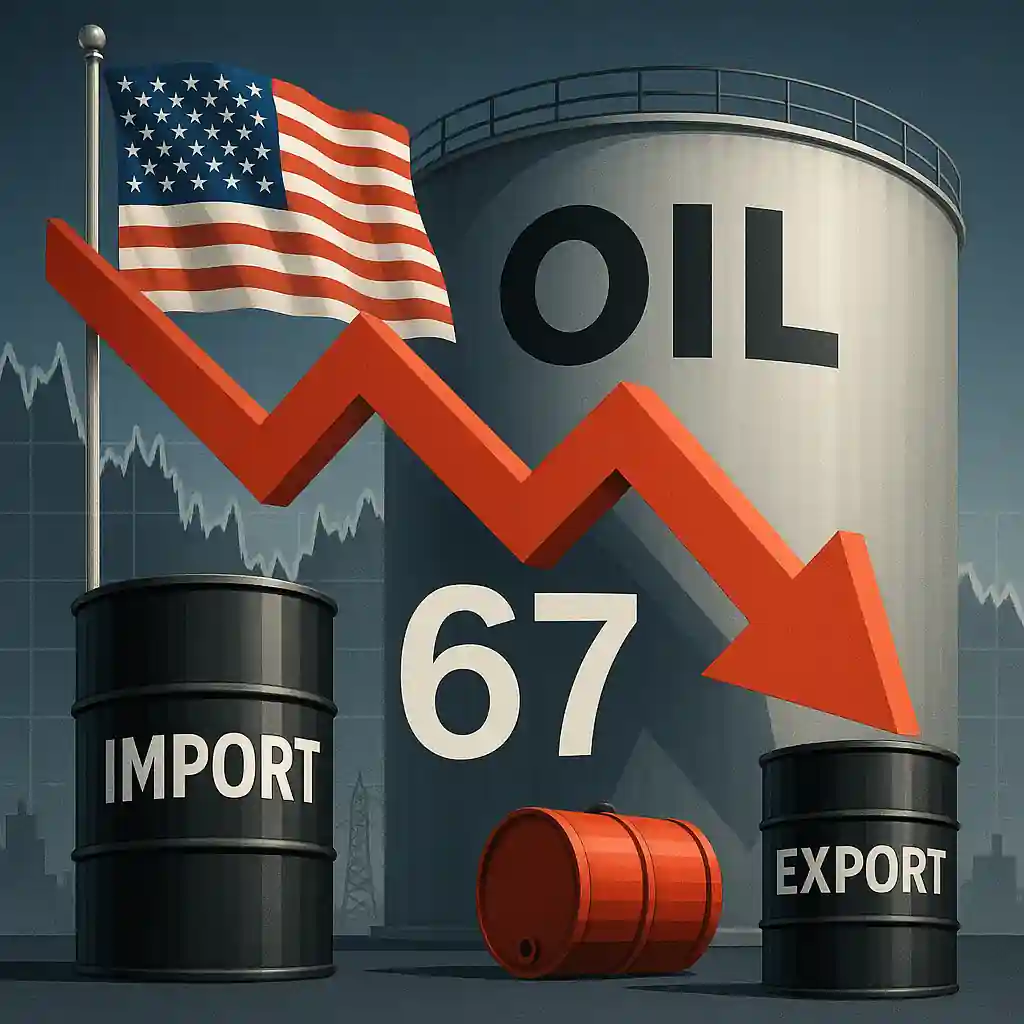Oil Drops as U.S. Outlook Weakens Sharply
Oil prices sank Friday following a slew of poor U.S. economic reports. West Texas Intermediate fell as much as 3.2%, sliding near $67 a barrel. This marks the steepest intraday drop since late June, as traders reacted to signs of slowing growth and looming oversupply.
Economic Data Signals Demand Weakness for Oil
The latest U.S. data paints a worrying picture. Job growth has cooled sharply over the past three months. In addition, manufacturing activity contracted at the fastest rate in nine months. These trends raise doubts about energy demand growth, especially for oil.
Tariff Announcements Add Pressure to Oil Market
President Trump finalized a new wave of tariffs, including higher duties on Canada. Though oil is technically exempt, the broader impact on trade and economic growth is bearish. Tariff fears have now shifted from theory to real-world consequences.
OPEC+ Expected to Add More Oil to Market
As demand signals weaken, the supply side may tighten the squeeze. OPEC+ is expected to agree on another 548,000 barrels per day increase during its upcoming weekend meeting. Rising output during a demand slowdown could exacerbate the global oil surplus.
Analysts Warn of Tariff Fallout for Oil Demand
“Tariffs are now officially a part of daily life,” said Daniel Ghali, commodity strategist at TD Securities. With the initial shock gone, markets now face the economic fallout. For oil, that means downward pressure unless new demand drivers emerge.
Traders Sideline as Volatility Sinks
Oil traders have been hesitant to make aggressive bets. Uncertainty around U.S. policy and OPEC+ actions has clouded market forecasts. Volatility has dropped as traders wait for clearer direction. For now, caution dominates sentiment in the oil market.
Supply Risks Mount as U.S. Output Soars
Oversupply concerns are not just theoretical. ExxonMobil recently posted record production for this time of year, driven by robust shale growth. Chevron is also set to hit a record 4 million barrels per day later this year. These gains add to global oil supply pressure.
Q2 Earnings Strong, But Bearish Cloud Lingers
Despite lower prices, Q2 earnings from oil giants beat expectations. However, this optimism is tempered by signs of a looming glut. Rising production without matching demand could keep prices depressed, regardless of earnings strength.
Oil Faces Headwinds as Supply-Demand Imbalance Grows
With economic weakness setting in and OPEC+ likely to add more barrels, the oil market faces tough weeks ahead. Supply may outpace demand through late 2025 unless growth rebounds or producers pull back. Until then, bearish momentum could persist.




